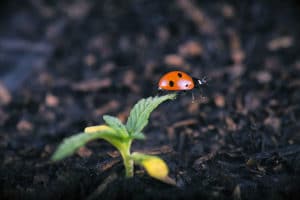Developments in hemp cropping could place New Zealand at the forefront of innovation globally, says Craig Carr, group managing director of Carrfields.
New multi-purpose cropping innovations being developed by Hemp NZ, Carrfields and NZ Yarn are paving the way for highly efficient use of the whole plant – resulting in higher potential returns for growers.
Under a partnership established late last year, Hemp NZ, NZ Yarn and Carrfields are making changes to hemp harvesting technology which allows the stalks and seed to be separated at harvest.
The innovations, which are the first to be developed and used in New Zealand, involve engineering adaptations to combine harvester front attachments.
These adaptations allow the seed and grain to be removed at harvest, with the stalks left on the ground separately for baling – essentially two harvests in one, known as ‘dual cropping’.
Craig Carr, group managing director of Carrfields and chairman of NZ Yarn’s parent company Carrfields Primary Wool (CP Wool), says dual cropping is a “huge breakthrough” for New Zealand’s fledgling commercial hemp industry.
“Until now, the only part of the hemp crop that has been harvested is the seed, however there are multiple parts of the hemp plant that can be used, with the stalk being of particular interest as a source of fibre.”
Dual cropping allows farmers to maximise the return from their crops, through making more of the plant available for use and minimising crop wastage, he said.
“We’re still fine-tuning our dual cropping equipment and processes but we’ve seen very pleasing results from our trials this year. It’s very exciting to think that next summer and autumn, we’ll be geared up for commercial hemp harvesting and production to begin on a significant scale,” Carr said.
Following Hemp NZ’s acquisition of a 15 per cent interest in NZ Yarn in late 2018, Hemp NZ is now in the process of installing a state-of-the-art hemp fibre processing facility in a 3000m2 space at the NZ Yarn factory in Burnside, Christchurch.
This will transform the NZ Yarn building from a wool carpet yarn spinning plant into a fully fledged, modern ‘fibre factory’ with equipment purpose-built and engineered for hemp, rather than using modified flax mills as seen in other countries.
Dave Jordan, chief executive of Hemp NZ, says the new facility, which is the first of its kind in New Zealand, will produce a very high quality fibre using efficient processing techniques.
This will open the door to the development of market-leading innovations in hemp fibre processing.
“There are many, many potential consumer and industrial uses for hemp fibre. We’re extremely excited about working with NZ Yarn to explore and develop some of these possibilities,” he said.
Once the machinery for the new processing line, which is being imported from Europe, is fully commissioned and ready to operate later this year, NZ Yarn and Hemp NZ will begin what is thought to be the first-ever commercial processing of hemp stalk into fibre in Australasia.
Processing is expected to begin towards the end of this year at the new facility, using hemp stalks from the 2019 harvest.
By the 2020 harvest, between 1500 and 2000 hectares of hemp crop is expected to be harvested and processed through the facility.
Hemp fibre has very exciting potential as an environmentally-friendly alternative across a huge range of industries globally, said Jordan.
“Hemp is a highly versatile natural product that we believe can form part of the solution to the looming global environmental catastrophe.”
Hemp fibre has a long history of human use dating back thousands of years and is now undergoing a strong resurgence as part of the increasing global awareness of the environmental damage caused by synthetic fibres, he said.
“The resurgence in popularity of hemp is based on its excellent environmental characteristics. It is pest-resistant, easy to grow organically and produces a very good yield of fibre per hectare compared with many other crops.”
The commercially-grown hemp plant is distinct from its illegal cousin as it does not contain THC, Jordan said.
“Hemp has been stigmatised and under-appreciated for decades but we’re working to change people’s perceptions of this highly valuable commercial crop, which can provide a very good return for both farmers and processors.”
Source: https://www.nzherald.co.nz/the-country/news/article.cfm?c_id=16&objectid=12239059



